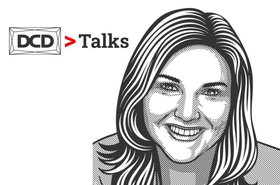One of the things that makes the data center industry so interesting is that it is changing at such a rapid pace. The veterans who have been around since the beginning can attest to this. They were around for the slow beginnings and witnessed the big bang of the industry.
Silke Barlow, while not a veteran with data centers, nevertheless has 15 years of experience in the tech industry and has watched the effect that the pandemic has had on the data center industry from Fujitsu’s front line.
“Hybrid is the new normal. There are very few organizations that are 100 percent cloud. The vast majority of organizations have a mixed environment of an on-prem, private, and public cloud, in reality.
"The pandemic has accelerated the adoption of cloud technologies and other technologies by about five years. We clearly see that in the growth rates of the public cloud as well. I think that segment has grown by over 40 percent in 2020.”
Cloud computing is becoming closer to earth. It is growing in its popularity, and while we can see the connection between the pandemic spurring increased reliance upon technology and therefore driving demand, this does not necessarily get to the root of what is powering the take-off.
“What drives our clients there is obviously to be agile, and to leverage that possibility of the cloud. When you look back, the initial driver for moving into the cloud was maybe cost. But that has changed a lot. We commissioned a report in 2019 that looked into the drivers for hybrid cloud environments, and actually, the cost was only in sixth place. I think the predominant drivers were flexibility in sourcing, business agility, followed by security.
“When you look at the latest reports, private cloud is probably the biggest growth area in terms of cloud adoption. We know that over 70 percent of clients that are already in a hybrid environment are planning to move more to the cloud.”
This growth and development are occurring en masse, with hyperscale and the wholesale market experiencing the push too.
“Hyperscale and the wholesale market are a newer segment that has been growing massively in the last few years, driven by the adoption of cloud technologies. With that, the market for data centers has changed for hyperscalers and wholesalers. It's about purpose-built facilities, it's about location, it's about connectivity, it's about being in the zone or not. Western Sydney is a great example of that. It's in the right zone, it's got the right connectivity, it's got the right layout, and it has the expansion capacity.
“Technologies that are currently on the rise, like AI bots, are more and more in the cloud. Specialized AI technology, as an example, is quite dense. As a data center provider, you need to be able to provide a facility that can take these kinds of dense workloads. It's driven by the technology which is driven by the demand.”
Universally, the push for cloud seems to be about a push for flexibility. Companies no longer want to invest in a certain piece of equipment or rack, they want to invest in services and outcomes, for their data center to be able to change with the evolving technology around it.
“Our clients do not look for just a data center provider, or for someone to provide them some servers, they are looking for someone to provide a solution, to solve a problem, and to support them in their ambitions and in their digital strategies.”


